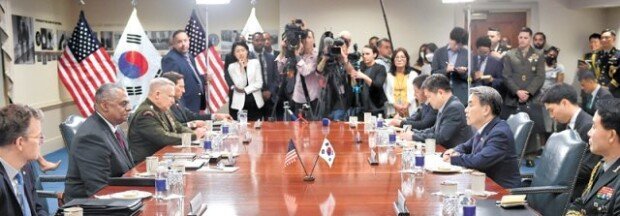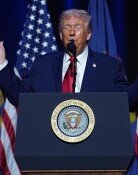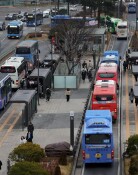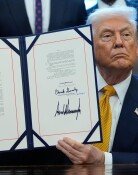S. Korea, US to hold EDSCG in September
S. Korea, US to hold EDSCG in September
Posted August. 01, 2022 07:54,
Updated August. 01, 2022 07:54

The high-level South Korea and U.S. Extended Deterrence Strategy and Consultative Group (EDSCG), which discusses countermeasures for the North Korean nuclear attacks against South Korea, considering it as the nuclear provocation against the U.S. mainland by fully mobilizing its forces, will be reactivated in September. EDSCG shall discuss in detail the timing, scale and measures of deploying the U.S. strategic assets including nuclear powered aircraft carrier strike group and submarines. EDSCG was put on hold in January 2018 since its second meeting on reasons of improving inter-Korean relationship and is being resumed in four years and eight months.
The South Korean and U.S. defense ministers held a meeting in Washington, D.C. on Friday (local time) and agreed to convene for EDSCG in the near future. “EDSCG will be held in Washington in September and detailed schedules are tentatively confirmed,” a South Korean military official conveyed. Immediately after the meeting, South Korean Defense Minister Lee Jong-sup commented, “The must be something concrete to back up if the U.S. is committed to protect South Korea against the threats of North Korea even putting up with attacks on the U.S. mainland soil which is EDSCG.” If North Korea pulls off its threats of nuclear loaded ICBM placing the U.S. mainland within the target distance, a ‘security device’ guaranteeing the U.S.’ punishment is needed of which EDSCG could play the role. Previously, in the May South Korean and U.S. summit, the summits of the two countries raised the stakes of including ‘nuclear’ as one of the measures for extended deterrence with which USA would provide South Korea and agreed on an early reactivation of EDSCG. The South Korean defense minister and U.S. Secretary of Defense decided to conduct a reinforced tabletop exercises (TTXs) within this year after holding an EDSCG meeting. TTXs allow South Korea and the U.S. to practices joint military responses in phased simulated contingency scenarios including North Korean nuclear threats, imminent use of nuclear weapons and use of nuclear weapons.
In the opening remarks of the meeting U.S. Secretary of Defense Lloyd Austin commented, “I look forward to productive discussions on how the alliance can further enhance deterrence readiness against aggressions from North Korea and other systemic competitors including China and Russia.”
Sang-Ho Yun ysh1005@donga.com







